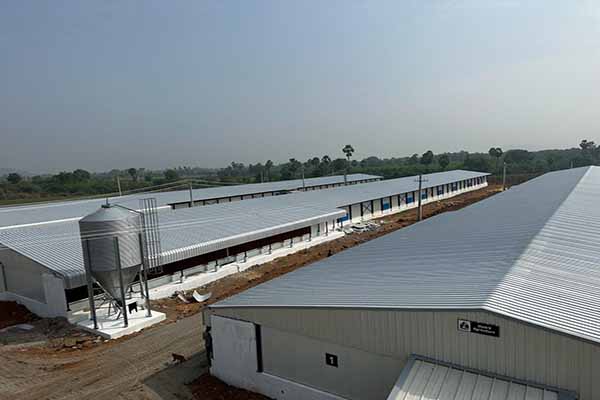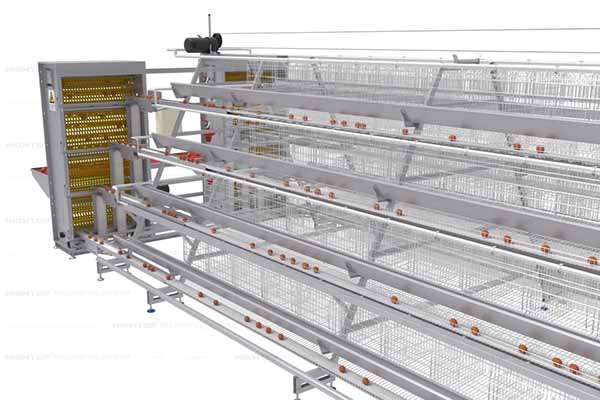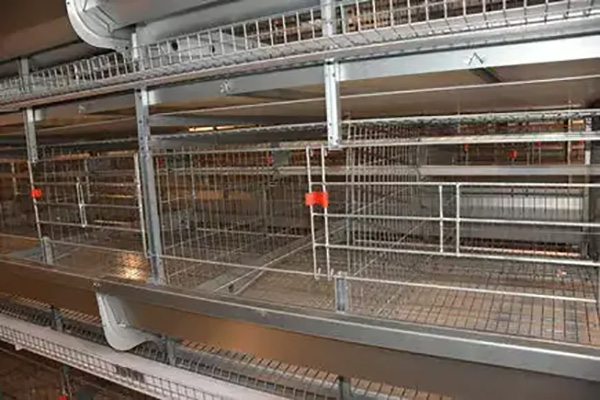Poultry Cage Systems for 50,000 Birds in Kenya: A Comprehensive Guide
Time : 2025-06-30
Kenya, with its growing poultry industry, has seen a significant increase in the demand for efficient and scalable poultry cage systems. For large-scale poultry farms housing up to 50,000 birds, the choice of cage systems is crucial for productivity, health, and sustainability. This article provides a detailed guide on poultry cage systems suitable for farms with a capacity of 50,000 birds in Kenya.
Understanding Poultry Cage Systems
Poultry cage systems are designed to house chickens, ducks, turkeys, and other poultry species. These systems come in various types, each with its own advantages and disadvantages. For a farm housing 50,000 birds, the following types of cage systems are commonly considered:
- Layer Cages: Ideal for laying hens, these cages provide ample space for the birds to move around and lay eggs. Layer cages usually have a capacity of 3-5 birds per cage.
- Broiler Cages: Designed for meat production, broiler cages are typically larger and accommodate more birds per cage, often up to 10-12 birds.
- Free-Range Cages: While not traditional cages, free-range systems can be integrated with poultry cage systems to allow birds some outdoor access.
Designing a Poultry Cage System for 50,000 Birds
Designing a poultry cage system for 50,000 birds requires careful planning and consideration of several factors:
1. Space and Layout
The farm should be divided into different sections for different purposes, such as housing, feeding, and egg collection. Each section should be designed to accommodate the specific needs of the birds. For example, the housing area should provide enough space for the birds to move around comfortably, with a minimum of 0.5 square meters per bird.
2. Material and Construction
The material used for the cage systems should be durable, easy to clean, and resistant to corrosion. Common materials include galvanized steel and plastic. The construction should be robust to withstand the weight of the birds and any environmental factors such as rain or sun exposure.

3. Ventilation and Temperature Control
Proper ventilation is crucial for the health and well-being of the birds. The system should allow for adequate air exchange to prevent the buildup of ammonia and other harmful gases. Temperature control is also essential, with systems that can adjust to different climatic conditions.
4. Feeding and Watering Systems
Automated feeding and watering systems are essential for large-scale poultry farms. These systems should be reliable, easy to maintain, and capable of feeding and watering up to 50,000 birds efficiently.

5. Egg Collection
Egg collection systems should be designed to minimize stress on the birds and ensure the eggs are handled gently. Automated egg collection systems can significantly reduce labor costs and improve egg quality.
Choosing the Right Poultry Cage System for 50,000 Birds in Kenya
When selecting a poultry cage system for a farm in Kenya, consider the following factors:
1. Local Climate
The climate in Kenya can vary significantly, from hot and humid in the coastal regions to cooler in the highlands. The cage system should be designed to handle these conditions effectively.
2. Cost and Budget
The initial investment and ongoing maintenance costs are important considerations. While high-quality systems may have a higher upfront cost, they can provide long-term savings through increased productivity and reduced disease incidence.
3. Local Regulations and Standards
Kenya has specific regulations and standards for poultry farming. Ensure that the chosen system complies with these requirements to avoid legal issues and ensure the health and safety of the birds.
4. Supplier Reputation and Support
Choose a supplier with a good reputation for quality and customer service. A reliable supplier can provide technical support and maintenance services, which are crucial for the success of the farm.

Conclusion
Implementing an effective poultry cage system for a farm housing 50,000 birds in Kenya requires careful planning and consideration of various factors. By choosing the right system, materials, and suppliers, farmers can ensure optimal conditions for their birds, leading to increased productivity and profitability.











